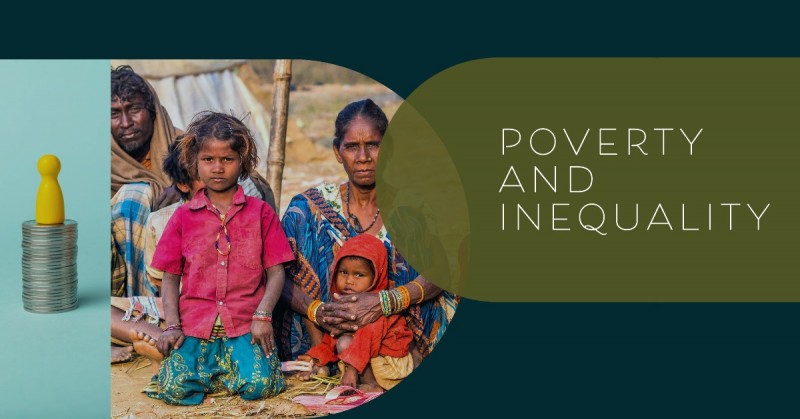
In today's society, poverty and inequality continue to be pressing issues that affect millions of people worldwide. This article aims to delve into the disparities in wealth, income, and opportunities among different regions and social groups. Furthermore, we will explore strategies that can be implemented to alleviate poverty and promote social justice for all.
Understanding Poverty and Inequality
Poverty refers to a state of deprivation, where individuals or communities lack access to basic necessities such as food, shelter, healthcare, and education. Inequality, on the other hand, refers to the unequal distribution of resources, opportunities, and rewards within a society. These two issues often go hand in hand, perpetuating a cycle of disadvantage for marginalized groups.
Disparities in Wealth and Income
One of the key indicators of inequality is the unequal distribution of wealth and income. Wealth disparity occurs when a small percentage of the population controls a significant portion of the resources, while the majority struggle to meet their basic needs. Income inequality, on the other hand, highlights the gap between high earners and those living on meager wages.
Disparities Among Different Regions
Poverty and inequality are not evenly distributed across regions. Developing countries often face higher poverty rates due to limited economic opportunities and inadequate infrastructure. Furthermore, rural areas within countries may experience greater disparities compared to urban centers, where access to education, healthcare, and employment is more readily available.
Disparities Among Social Groups
Inequality can also be observed among different social groups. Factors such as gender, race, ethnicity, and disability can significantly influence an individual's access to resources and opportunities. Marginalized communities often face systemic barriers that limit their chances of social mobility and perpetuate cycles of poverty.
Factors Contributing to Poverty and Inequality
Various factors contribute to the persistence of poverty and inequality. These include lack of education and skills, limited job prospects, inadequate social safety nets, discrimination, and unequal distribution of power and resources. Understanding these factors is crucial in developing effective strategies to address the root causes of these issues.
The Impact of Poverty and Inequality
Poverty and inequality have far-reaching consequences for individuals and societies. They hinder economic growth, perpetuate social unrest, and lead to a myriad of social and health problems. High levels of poverty and inequality can also exacerbate existing disparities and hinder progress towards sustainable development goals.
Alleviating Poverty and Promoting Social Justice
Addressing poverty and inequality requires a comprehensive approach that encompasses economic, social, and political dimensions. Here are some strategies that can contribute to poverty alleviation and promote social justice:
1. Education and Skill Development
Investing in quality education and skill development programs can empower individuals to break free from the cycle of poverty. Accessible and inclusive education equips people with the knowledge and skills necessary for employment and economic empowerment.
2. Employment and Economic Opportunities
Creating job opportunities, particularly in sectors that cater to marginalized communities, is crucial for reducing poverty and inequality. Promoting entrepreneurship and providing vocational training can empower individuals to become self-sufficient and contribute to the economy.
3. Access to Basic Services
Ensuring universal access to basic services such as healthcare, clean water, sanitation, and housing is essential for poverty reduction. Governments and organizations should work together to improve infrastructure and provide essential services to underserved communities.
4. Social Safety Nets
Establishing social safety nets, such as welfare programs and unemployment benefits, can provide temporary assistance to individuals facing financial hardship. These safety nets act as a cushion and help prevent vulnerable populations from falling into deeper poverty.
5. Reducing Discrimination and Marginalization
Efforts to eliminate discrimination and marginalization are crucial for achieving social justice. Policies and initiatives that promote equal rights, combat racism and sexism, and ensure equal opportunities for all can contribute to a more equitable society.
6. Empowering Vulnerable Groups
Empowering vulnerable groups, such as women, children, the elderly, and persons with disabilities, is paramount in addressing poverty and inequality. Providing support, protection, and opportunities for these groups can enable their full participation in society.
Conclusion
Poverty and inequality pose significant challenges to societies worldwide. By understanding the disparities in wealth, income, and opportunities among different regions and social groups, we can work towards implementing effective strategies to alleviate poverty and promote social justice. It is crucial for governments, organizations, and individuals to come together and create a more equitable and inclusive future for all.
World Music Day 2023: Know the history and importance of this day
International Yoga Day : Join the World of Yoga
Elon Musk's Electrifying Insight: Empowering Ukraine's Thunderous Counteroffensive